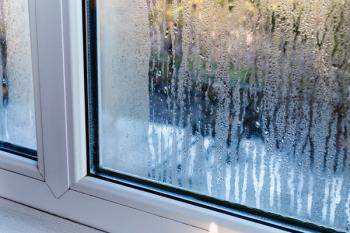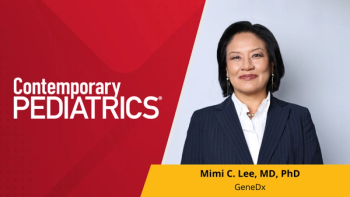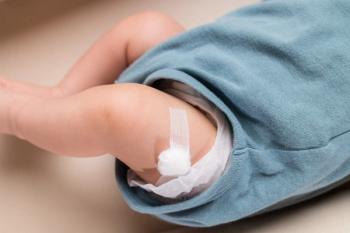Key takeaways:
- One-year data from BRAVE-AA-PEDS confirm baricitinib’s robust and sustained efficacy in adolescents with severe AA.
- Early treatment initiation may increase the likelihood of full or near-complete hair regrowth.
- The safety profile aligns with prior studies, supporting baricitinib’s suitability for broader pediatric use.
New data from Eli Lilly and Company and Incyte show that oral baricitinib, a once-daily Janus kinase (JAK) inhibitor, produced sustained hair regrowth in adolescents with severe alopecia areata (AA) through 1 year of treatment. Results from the phase 3 BRAVE-AA-PEDS trial were presented at the 2025 Fall Clinical Dermatology Conference in Las Vegas.1
Findings build on 36-week results from the same study presented earlier this year at the American Academy of Dermatology (AAD) meeting, reinforcing baricitinib’s potential to address an important unmet need in pediatric dermatology.2
“For nearly half of the people with severe alopecia areata, the disease starts before adulthood and can progress quickly, significantly impacting patients’ lives,” said Nicole Friedland, president and CEO of the National Alopecia Areata Foundation. “Given the profound burden of this disease, new treatment options are needed for children and adolescents, populations that have been underrepresented for far too long.”
One-year BRAVE-AA-PEDS results of baricitinib for alopecia areata
At baseline, participants had an average of 89% scalp hair loss, with 63.8% of them having very severe AA at baseline (Severity of Alopecia Tool [SALT] score 95-100).
After one year of treatment:
- 54.1% of adolescents receiving baricitinib 4 mg and 31% on the 2 mg dose achieved 80% or greater scalp hair coverage (SALT ≤20).¹ Additionally, 41.2% of those taking 4 mg and 26.2% taking 2 mg achieved near-complete scalp regrowth (SALT ≤10).
- Improvements extended beyond scalp hair. Eyebrow regrowth was observed in 64.8% of patients receiving 4 mg compared to 27.8% with 2 mg, while 63.3% and 34% of the same groups achieved eyelash regrowth, respectively.
- A post-hoc analysis revealed even greater responses among adolescents who had been diagnosed less than two years prior to treatment initiation—80% on the higher dose achieved successful regrowth at one year.
- The safety profile was consistent with prior adult and adolescent data, with no new safety signals identified.
The most common adverse events were acne, upper respiratory tract infection, and influenza.
Baricitinib was the first systemic therapy approved in the United States for adults with severe AA in 2022. Lilly plans to submit the new adolescent data to global regulators for a potential label expansion and will soon begin enrolling younger children (ages 6 to under 12) into the next BRAVE-AA-PEDS cohort.
“These promising results for adolescents reinforce what we see in clinical practice with adults, which is that starting treatment with baricitinib early can lead to higher rates of scalp hair regrowth, including near-complete regrowth for many patients,” said Brittany Craiglow, MD, of Yale School of Medicine. "Systemic treatments for adolescents shouldn't be the last resort, but part of the treatment conversation among doctors, caregivers, and patients from the beginning."
Previous 36-week data for baricitinib
At the 36-week mark, 42% of adolescents receiving the 4 mg dose of baricitinib achieved a SALT score of 20 or less, compared to just 2% in the placebo group. The 2 mg dose also showed effectiveness, with 21% of patients reaching the primary endpoint. Additionally, the higher dose led to 60% of patients achieving at least a 50% improvement in SALT scores, while the lower dose reached 37%. In contrast, only 5% of those on placebo showed similar improvement.2
Eyebrow and eyelash regrowth were also notably higher in the baricitinib groups. By week 36, 43% of patients on the 4 mg dose experienced significant eyebrow regrowth, compared to 14% in the placebo group. Eyelash regrowth followed a similar pattern, with 50% of patients on the higher dose showing improvement versus none in the placebo group.
References:
- Lilly's baricitinib delivered near-complete scalp hair regrowth at one year for adolescents with severe alopecia areata in Phase 3 BRAVE-AA-PEDS trial. Eli Lilly and Company. Press release. October 24, 2025. Accessed October 24, 2025. https://investor.lilly.com/news-releases/news-release-details/lillys-baricitinib-delivered-near-complete-scalp-hair-regrowth
- Ebert M. Baricitinib shows promise for adolescent alopecia areata in phase 3 trial. Contemporary Pediatrics. Published March 10, 2025. Accessed October 24, 2025. https://www.contemporarypediatrics.com/view/baricitinib-shows-promise-for-adolescent-alopecia-areata-in-phase-3-trial









